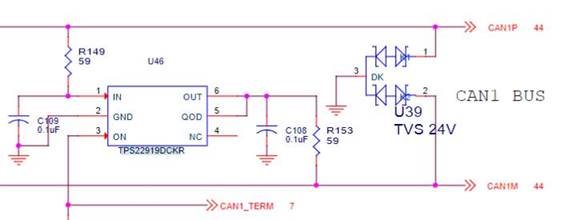I do have a question on the TPS22919DCK. I see there is a PSPICE model for this part, can PSPICE models be used with TI-TINA?
The application is using the part for a SW controlled CAN termination. A snippet of the schematic is below. The connection to pin 5 has been cut, so pin 5 is not connected. Basically trying to use the part as an analog switch. But it’s not working like I thought so I wanted to simulate it with TI-TINA.
Can PSICE models be used or modified to work with TI-TINA?
Thanks,


